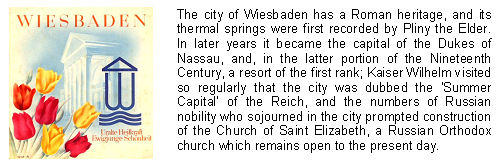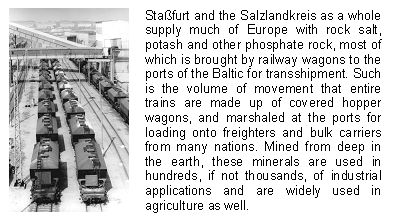There can be no question that the Mexican Canal, completed nearly a year ago, is an engineering marvel of the age, or any age. Its thirteen massive locks join two great ocean basins through mountainous terrain long thought impossible to traverse. What remains at this point is the question of the economic viability of the Mexican Canal, given the cost of construction. Only time will tell if the millions sunk into the project will see a commercial return, yet the evidence so far suggests that the project provides economic benefits to be reaped by firms willing to venture on the new trade route.
Response of American Ocean Shipping
American flag operators enjoy the benefit of preferential tolls on the Mexican Canal thanks to the contributions of the United States to the cost of the project. This has led to its use by many American lines sailing overseas to switch to the Mexican Canal in preference to the older Panama Canal. A prime example of this trend is the round-the-world service of the Isthmian Steamship Company, whose ships would depart the port of New York and call at Los Angeles and San Francisco before sailing westward across the Pacific. By using the Mexican Canal in preference to that in Panama, the Isthmian steamers are able to shave three days off the sailing time between New York and Los Angeles – it taking twenty days via Panama versus only seventeen via the Mexican Canal, even allowing for the lengthy transit time of the latter. In contrast the firm of William R. Grace and Company continues to route its ships sailing from New York and other ports on American’s eastern seaboard via Panama, the Mexican route offering no significant savings compared with the detour off a natural trade route.
The Mississippi Steamship Company, based in New Orleans, has responded to the opportunities presented by establishing a new direct service from the Louisiana port to ports on the western coast of Colombia, Ecuador, Peru and Chile via the Mexican Canal. Advertised as the Gulf and South America Line, the new service has led the company to construct three modern passenger cargo vessels for the route, and it has recently placed orders for the construction of four modern cargoliners to replace a mixed fleet of steamers constructed during the Great War. The Mississippi Steamship Company’s service to the west coast of South America complements its existing Gulf, Brazil and River Plate Line, which services the eastern coast of South America.
Response of Foreign Ocean Shipping
Relatively few non-US shipping lines have availed themselves of the Mexican Canal to date. For most traffic sailing to the western ports of South America, the Panama Canal remains a shorter route. The HAPAG has re-routed its North American services to take advantage of the new route and has added the port of New Orleans to both outward and homeward voyages. The Chilean Compañía Sudamericana de Vapores was quick to avail itself of the Mexican route, as the Chilean flag also benefits from the preferential tolls when using the Mexican Canal. Compañía Sudamericana has introduced a new northbound service to the Gulf ports of the United States, tapping fresh markets for Chilean exports. Tramp steamers of a number of nations have also used the Mexican route when due to load or unload at New Orleans or other ports of the Gulf of Mexico.
Response of American Inter-coastal Shipping
Those American firms engaged in the protected traffic between the eastern coasts of the United States and its Pacific coast have seen the greatest benefit from the opening of the Mexican Canal, and have been quick to route their ships through it.
The American-Hawaiian Steamship Company of New York is typical of these firms. Since the latter years of the Nineteenth Century it has operated a large fleet of steel steamers hauling cargo from New York, Boston and Philadelphia to ports between Los Angeles and Seattle, and thence on to Hawaii – first sailing through the Strait of Magellan, and then using the Panama Canal. The aforementioned three days saved on the westward or eastward voyage – fifteen percent of the voyage time – has boosted the firm’s competitive position. Other firms operating on the west-bound inter-coastal route include the Luckenbach Steamship Company of New York and the Baltimore Mail Line, an affiliate of the Roosevelt Steamship Company.
American inter-coastal shipping firms based in San Francisco or Seattle have perhaps reaped the greatest benefit from the Canal’s completion. Long involved in shipping construction materials to the Canal Zone, they were among the first to switch their sailings from ports on the Eastern Seaboard to the Gulf Coast, opening up lucrative direct services to New Orleans, Mobile and Galveston. Pope, Talbot and Company of San Francisco now operates the California Eastern Line – a service between San Francisco, Los Angeles and New Orleans, with sailings in either direction every three weeks; Swayne, Hoyt and Company, also of San Francisco, operates the Gulf Pacific Line, linking San Francisco with New Orleans and the port of Mobile, Alabama. Use of the Mexican Canal has reduced sailing time between New Orleans and Los Angeles to little more than twelve days, as compared with the nearly eighteen days previously required.
Inter-coastal operators based in the Gulf Coast have also been quick to shift to the Mexican route. The Lykes Brothers Steamship Company of New Orleans and John B. Waterman and Company of Mobile have both abandoned the use of the Panama Canal. It is also reported that both firms are contemplating establishing routes to serve foreign ports in South America and/or the Pacific; however, no definitive announcements to this effect have been published in the shipping press.
Port Developments, New Ideas
The port of New Orleans at the mouth of the Mississippi river has entered a boom period, as it now stands as the gateway between the farms and industry of the American heartland and its overseas markets – routes now shortened substantially by completion of the Mexican Canal. The port has seen substantial public and private investment, including new fueling facilities, transit sheds for incoming and outgoing cargo, inland rail connections, and construction of new wharves. The port of Mobile has seen increased traffic and local authorities are pressuring the Federal Government to invest in dredging of the approaches to the port. The growing prosperity has even spread to smaller ports, such as Galveston and Houston in Texas, from which much cotton is shipped to Japan, and Tampa, Florida.
Of particular interest is the recent decision of the Gulf, Mobile and Ohio Railroad Company to initiate an experimental service to ship its rail cars by sea to the Pacific Coast. Seatrain Lines of Hoboken, New Jersey, presently employs several large train ferries to ship rail cars by sea from New York and Philadelphia to Florida and to New Orleans, avoiding many bottle-necks in the American railway system. The Seatrain New Orleans has been chartered to the GM&O Railroad for a period of twelve months, and she has made two transits to Los Angeles thus far. It is far too soon to determine the long-term viability of such a service, but the early results are promising.
Summary
In its first year of its operations the Mexican Canal has contributed significantly to the growth of trade between North and South America as well as facilitating the continuing economic growth of the United States. The revenue derived from canal tolls is rising; how soon it continues to do so without provoking some change in the toll regime on the Panama Canal remains to be seen. The increase in ship traffic has led some American-flag operators to invest in new tonnage better suited to modern trading conditions. Whether the Mexican Canal proves to be the Eighth Wonder of the World or a white elephant of gigantic proportions remains to be seen; in any event, American ship owners seem pleased with the current situation.










Quoted
Otto von Hapsburg was less concerned with financial arrangements than he was the political situation. He wished to make a positive contribution to the peaceful settlement of ancient questions in central Europe – one which he felt himself uniquely qualified to make. The future continued to offer promise.Quoted
Originally posted by AdmKuznetsovQuoted
Otto von Hapsburg was less concerned with financial arrangements than he was the political situation. He wished to make a positive contribution to the peaceful settlement of ancient questions in central Europe – one which he felt himself uniquely qualified to make. The future continued to offer promise.

